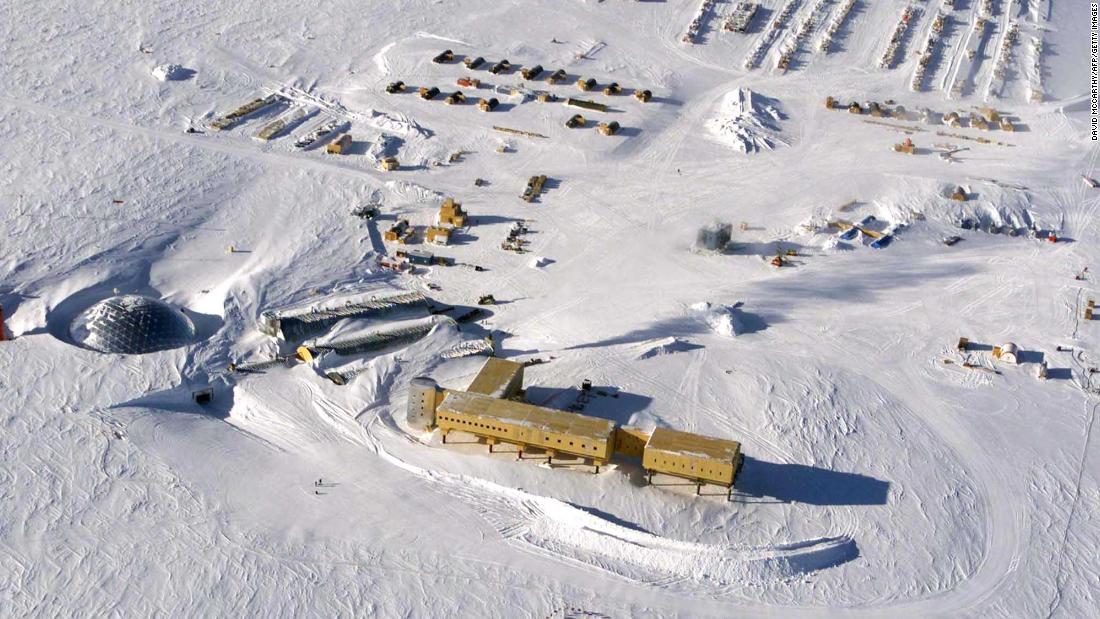
The study, published in the journal Nature Climate Change on Monday, sheds new light on the most remote region on Earth. While scientists have known for years that the outer regions of Antarctica are warming, they previously thought that the South Pole, deep inside, was isolated from rising global temperatures.
“This highlights that global warming is global and is reaching these remote places,” said Kyle Clem, postdoctoral fellow in Climate Sciences at the University of Wellington and lead author of the study.
Clem and his team analyzed data from the weather station at the South Pole, as well as climate models to examine warming in the interior of Antarctica. They found that between 1989 and 2018, the South Pole had heated up to around 1.8 degrees Celsius in the past 30 years at a rate of +0.6 ° C per decade, three times the world average.
Scientists said the main cause of the warming was the rise in sea surface temperature thousands of kilometers away in the tropics. Over the past 30 years, warming in the western tropical Pacific Ocean, a region near the equator in northern Australia and Papua New Guinea, meant that there was an increase in warm air being transported to the South Pole.
“It is wild. It is the most remote place on the planet. What matters is how extreme temperatures oscillate and change over the interior of Antarctica, and the mechanisms that drive them are linked 10,000 kilometers (6,200 miles) north of the continent in the Pacific tropic, “Clem said.
Melting sea ice, Antarctic heat waves
While the South Pole remains below zero and is likely to remain that way, Clem said the observed warming trend at the Pole is linked to what we are seeing on the coast and the Antarctic Peninsula.
The warm-up “begins at the shoreline and progresses inland,” Clem said.
“As you get closer to shore, where warming is coming in, you’ll start to see more impacts. As you get to that point near the freezing point, you’ll start to melt. Or you’ll melt the sea ice and start to heat up the ocean in the Weddell Sea and that affects life in that area, “he said.
Is the climate crisis to blame?
Initially, scientists discovered that the South Pole was actually cooling more than one degree during the 1970s and 1980s, while global temperatures were increasing. The team said the cold period was reduced to natural weather patterns that occur in cycles of 20 to 30 years.
Then the trend changed quickly “and suddenly we have almost 2 degrees of warming at the turn of the century,” Clem said.
The jump from 1 degree of cooling to 2 degrees of heating meant an increase of 3 degrees.
Meanwhile, global temperatures have risen by approximately 1 degree Celsius (1.8 degrees Fahrenheit) above pre-industrial levels and the goal is to keep the global average temperature within 1.5 degrees Celsius (2.7 degrees Fahrenheit) to avoid the worst impacts of the crisis climatic.
Clem said the extreme fluctuation at the South Pole suggests that natural variability was “masking” the effects of human-induced climate change.
The team discovered that the warming was caused by natural variations in sea surface temperatures for several decades. But these natural climatic factors “worked in concert” with, or were reinforced by, global greenhouse gas emissions.
“We have natural processes that will always take place amid global warming and human influence on the climate system,” said Clem. “When the two work together, it is quite remarkable.”
The science behind the warming.
In addition to human interference from greenhouse gas emissions, the researchers said there were several natural processes working behind the scenes to heat the South Pole.
A climatic phenomenon called the Pacific Interdecadal Oscillation (IPO), which governs ocean temperatures in the Pacific Ocean, changed from a positive phase to a negative one in the early 21st century. That warmed up the western tropical Pacific and caused more intense cyclones and storms..
Everything that has made the South Pole one of the fastest warming places on the planet.
Upper limits of natural variability.
Because the temperature records for the South Pole only date back to 1957, scientists were unable to reach a definitive conclusion that the warming was fueled by human activity.
They then used models that simulate the Earth’s climate with greenhouse gas concentrations representative of pre-industrial times, without human influence.
In the simulations, the team calculated all possible 30-year trends that could occur at the South Pole in those models. They found that the observed warming of 1.8 C was greater than 99.9% of all possible 30-year trends occurring without human influence.
The authors said that while this meant that warming “lies within the upper limits of the simulated range of natural variability,” the nature of the trend was “remarkable.”
“Almost anywhere else on Earth, if you had 1.8 ° C of warming for 30 years, this would be off the charts.” Clem said.
But the result was not 100%. So There is a possibility that the warming at the South Pole could have occurred only through natural processes, according to Clem: But it is very small.
.